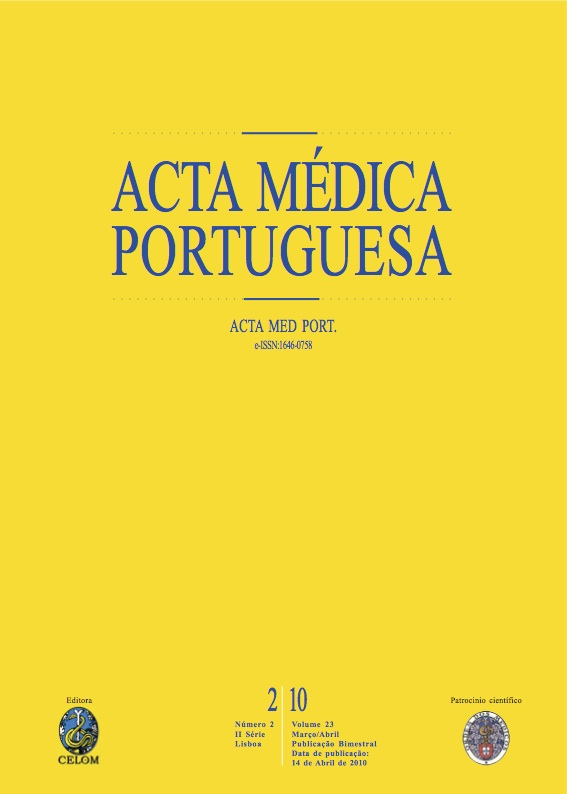Acute coronary syndrome in primary health care.
DOI:
https://doi.org/10.20344/amp.614Abstract
It is thought that in the XXI century cardiovascular disease will become the main cause of disability ant death in the world. Cardiac complaints are very common in clinical practice and the high prevalence of coronary disease and its sequels puts the family doctor in the frontline of the struggle against this pathology. This review pretends to inform about the presentation, diagnosis and urgent approach of the acute coronary syndrome as well as the need of continuity of care and secondary prevention.Coronary disease can appear as a myocardial infarction and occurs predominantly in a population susceptible to atherogenesis due to various risk factors. Acute thoracic discomfort is the most usual clinical presentation and the initial evaluation intends to determine its cause through a brief clinical history, physical exam, electrocardiogram and dosing of markers of cardiac necrosis. After confirmation of the diagnosis the patient is submitted to urgent treatment that depends on the form of presentation of the acute coronary syndrome. It usually involves study of coronary anatomy by coronariography and revascularization. After the acute event the coronary patient must initiate a medical therapy with drugs that reduce mortality (antiplatelet therapy, beta-blockers, angiotensin converting enzyme inhibitors and statins) and aggressively control the modifiable risk factors.The family doctor has a primordial role in continuing care initiated at the hospital and in implementing aggressive secondary prevention measures. By knowing and putting them into practice, the family doctor takes his part in reducing the burden of cardiovascular diseases and in controlling this epidemic.Downloads
Downloads
How to Cite
Issue
Section
License
All the articles published in the AMP are open access and comply with the requirements of funding agencies or academic institutions. The AMP is governed by the terms of the Creative Commons ‘Attribution – Non-Commercial Use - (CC-BY-NC)’ license, regarding the use by third parties.
It is the author’s responsibility to obtain approval for the reproduction of figures, tables, etc. from other publications.
Upon acceptance of an article for publication, the authors will be asked to complete the ICMJE “Copyright Liability and Copyright Sharing Statement “(http://www.actamedicaportuguesa.com/info/AMP-NormasPublicacao.pdf) and the “Declaration of Potential Conflicts of Interest” (http:// www.icmje.org/conflicts-of-interest). An e-mail will be sent to the corresponding author to acknowledge receipt of the manuscript.
After publication, the authors are authorised to make their articles available in repositories of their institutions of origin, as long as they always mention where they were published and according to the Creative Commons license.









